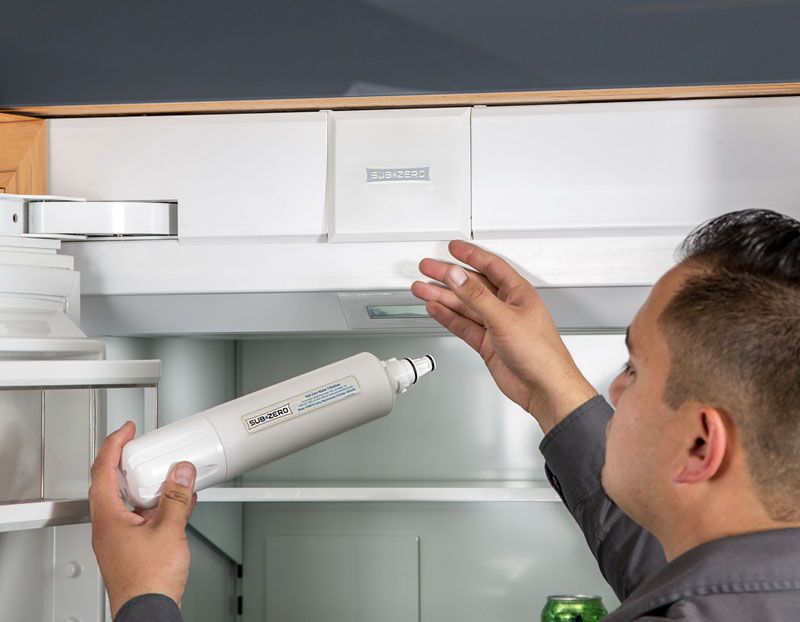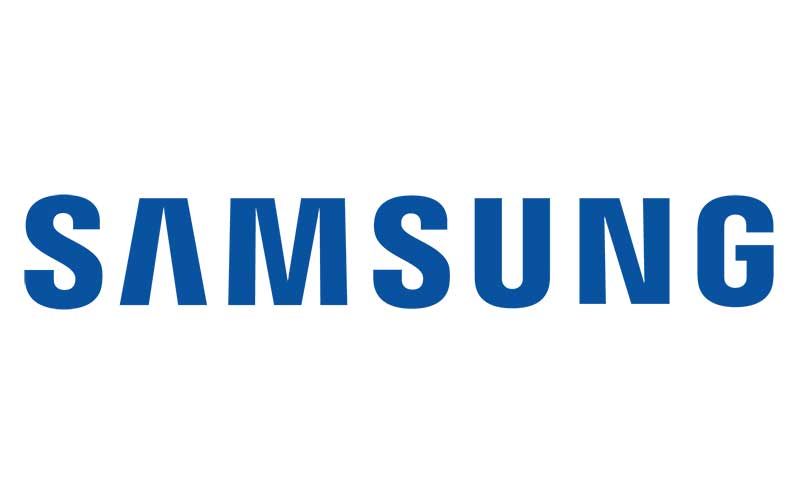2020 Refrigerator Buying Guide – Best Refrigerators for Your Money
Table of Contents
Reliability and Manufacturer Support
Food Preservation Excellence
Two Other Cost Considerations
The Ultimate Cost of a Refrigerator
Our Grades
On the go? Need the short version?
Download the Cheat Sheet

Let’s get one thing clear right off the bat: this 2020 refrigerator buying guide is going to be much different than others. We’ll clear away the fluff around refrigerators and focus on what really matters:
- The lifetime consumer experience for each refrigerator brand—how well it preserves food and how few headaches it’ll give you
- The net value of each refrigerator brand, because sometimes expensive refrigerators are cheaper in the long run
With this info, we hope to help you find a refrigerator you’ll love.
Note: we will focus on refrigerator brands, not specific models. Most models within a brand are relatively the same, just tailored to different consumer preferences.
Reliability and Manufacturer Support
What service is available in my area?
Before you do any more research about a brand of refrigerator, first check to see what service is available in your area (at the end of the guide, we provide a table with links to each brand’s service locator). There’s nothing worse than buying a product only to discover when it breaks, whether a year or ten after buying it, that there is no way to get it fixed where you live.
- Some areas in the US have no servicer for the brand.That’s not to say that no one in the area will be able to service the refrigerator, but it usually means those technicians aren’t very familiar with the product and parts may be difficult to come by. Don’t risk it.
- Some areas have only one authorized servicer.Do your research before you commit to a brand. If it sounds like they are a nightmare to work with—poor communication, low success rate, lack of care for their customers—don’t sign yourself up for the nightmare in case your product breaks under warranty.

A secondary concern is how easy the manufacturer makes it to service the product, which can be the difference between a great repair experience and a lackluster one,* support which we also rate at the end of this guide.
How much is the lifetime cost of ownership?
As with cars, there is a lifetime cost of ownership when it comes to refrigerators, factoring in:
The generosity of the manufacturer warranty
At the end of guide, we provide a table that includes warranty info for each brand. Additional warranty related items to consider include:
- Full v. limited warranties.Most brands offer a limited warranty, as opposed to a full warranty, meaning it doesn’t meet federal standards for a comprehensive warranty. Most customers won’t notice the difference, but a limited warranty provides more leeway for brands to potentially deny coverage or not reimburse for a faulty, unrepairable product. So, no-brainer here, full is better than limited, and more years are better than fewer.
- Brands that play fast and loose with the warranty.On the flip side of that, it’s worth noting that warranty details don’t always tell the full story. Some brands go the extra mile regardless of whether the product is under warranty—“Oh you’re a few months out of warranty, don’t worry, we’ll take care of it”—or whether the issue is with the appliance. We have known manufacturers to pay for a warranty visit when it was just an issue with the home or a product education issue (looking at you, Samsung, Sub-Zero, Bosch and Thermador).
Yes, longer more comprehensive warranties are better, but as well, a better warranty usually indicates that a brand will stand behind its customers as well as its product.
BUYER BEWARE, do not be suckered into paying for coverage from an extended warranty company. Read why it’s almost never a good idea to buy an extended warranty here.
How often it will require service
We have data going back years and years and know a thing or two about the reliability of appliances. You can check out the table at the end of the guide for our reliability grades, but here are a couple quick ways to spot reliability:
- The higher the cost, usually the more reliable the product.These are complex, finely-constructed machines meant to operate 24/7 for over a decade always within a few degrees (or much less) of the temperature you set. For that reason, you should be wary of any refrigerator that comes cheap. Good design, production and quality assurance cost money. And the more a product costs to build and ensure the quality of, the more it will cost consumers to buy. This isn’t an industry with egregious mark-ups, Sub-Zero and True refrigerators cost a lot to build and show their quality with excellent reliability. At the opposite end of the spectrum, when accounting for rates of ownership, we get called out to more entry-level refrigerators, as from GE and Frigidaire, than any other.
- The length of the warranty (and additional warranties) demonstrates a brand’s trust in their product.This is a good indicator for how much trust the manufacturer has in the quality of their engineering, the error-free nature of their production lines, and the reliability of their products. They wouldn’t offer so many years of coverage if they thought the appliance would be breaking down all the time.
Still, do check out our grades at the end of the guide.
The cost and availability of parts

Don’t worry, we won’t send you down the rabbit hole of researching compressor prices, because you honestly shouldn’t be thinking about that when buying a refrigerator. Yes, higher-end models tend to have more expensive parts, but that’s because those parts are higher quality and rigorously tested, meaning they are less likely to break again. Having to replace a $50 part twice is more expensive than replacing an $80 part once.
What you should be concerned with is the availability of parts. Low-end brands have a habit of discontinuing parts for “older” models. If they do and something important breaks on your refrigerator, you are out of luck, no matter how few years it’s been since you purchased the refrigerator. Which means it’s time to buy a new fridge.
The average lifespan before it needs to be replaced
The range for refrigerator lifespans is actually quite large. Some low-end refrigerators won’t last a decade, the average lifespan is around 13 or 14 years, and high end models can last up to 18 or 19 years. And then there is the cream of the crop, Sub-Zero refrigerators, which are built to last over 20 years, with some even making it into their 3rd decade when well-maintained. (By well-maintained, we mean that the owner cleans the refrigerator condenser at least annually, which, while we’re on the subject, front access condensers are preferable for being easier to maintain.) Those extra years save a lot money in the long run.
How easy does the brand make owning the appliance?
We don’t want to boil it down to just a question of weighing costs. As servicers, we’ve seen firsthand, time and again, how anxiety-inducing a malfunctioning refrigerator can be. Worrying about your groceries spoiling or your floors being damaged by a leak on top of unexpected expenses is a sure way to ruin a day. In other words, reliability has a value outside of money saved in terms of headaches avoided.
But there are other ways brands can make a product easier or harder to own:
- How easy do they make installation?After you buy your refrigerator, installation is the next step. Many dealers offer installation, but not all. Or you may be the sort of customer that wants to shop around for that service. Contact the manufacturer to learn what they can do to support your installation experience. Some brands, like Sub-Zero, even have authorized installation partners.
- How easy do they make warranty calls?If your product breaks under warranty, some manufacturers like Sub-Zero or Bosch/Thermador, are flexible, allowing you to call an authorized servicer directly and avoid the rigmarole of the call center experience. Other manufacturers, such as Samsung and LG, insist that customers go through an extended phone support experience before they determine service is needed. Sometimes poor communication between the manufacturer and authorized servicer means customers have to repeat information to the servicer, which we hear from our customers is a process they don’t enjoy.
- How many resources do they provide owners with?Check out the owner portal of their website. Is there a lot of information readily at hand, including warranty info and manuals? Are there use and care guides covering how to clean the refrigerator or troubleshoot a clogged icemaker? Some brands even provide recipes and kitchen design inspiration, which shows a true desire to make your life better.
- Do they offer any refrigerator replacement specials?Ask what the brand’s end-of-life policies are. When it’s time to replace the refrigerator, will the brand do anything to reward your loyalty?
QUICK RECAP
- Check for service in your area before you buy
- Take a close look at the warranty info
- Review our reliability and service support grades
- Look around on the website for resources for owners
Food Preservation Excellence
How well does it do the job I’m buying it for?

At the end of the day, a fridge keeps food fresh. If you’re not buying your refrigerator with that top of mind, why are you buying a refrigerator?
Seriously, 40% of all food in America is thrown out, which can cost a family of four up to $1500 a year. A better refrigerator saves you money and trips to the store, while also reducing your impact on the environment.
Question is: how do you know how well a refrigerator will preserve food ahead of time? Simple. Refrigeration is the art of promptly bringing food to a temperature and humidity at which it will stay fresh, and keeping it in that narrow range.It’s a complicated art, so, no surprise, maintaining a consistent temperature and humidity is a function of the technology and engineering that goes into the refrigerator.
Thus, it’s pretty simple to create a checklist of technical features a refrigerator should have to make for a good food preserver:
- Dual evaporator systemBy running the freezer and refrigerator on different cooling systems, this tech does more than anything to maintain the proper temperature and humidity.
- State-of-the-art crisperMany of the food products most at risk of spoiling—meats, cheeses, fruits and veggies—are stored in drawers, including special crisper and meat drawers. The reason is that each has different storage needs—your crispers need to keep humidity in or let ethylene gas out, your meat drawer needs to run colder than the rest of the fridge. Better crispers will have gasket seals to isolate the crisper air, and are usually programmable or adjustable. And some new models of refrigerators have a separate temperature control for the meat drawer to maintain a separate, colder climate for meat products (especially important if you eat a lot of deli meats).
- Digital thermostatFederal recommendations are that food be stored at 35-38°. Most fridges will naturally run in this range, so the thermostat is less to let you set the temperature, and more to alert you when the temperature is off, so you can call a service company.
- Door closure assist and door alarmsOne of the primary culprits of improperly maintained internal climates is humans rushing about and not properly closing the door (which also wastes a lot of electricity). Some models have ramped closing cams to help shut the door, while high-end units use springs to assist closure. But on many lower-end models, if you don’t shut the door, it doesn’t shut. So test out how well the door shuts unassisted when in the store. And, as a failsafe for if and when a door doesn’t close, door alarms excel at pestering homeowners into realizing something is amiss.
- Air filtersMany of the top refrigerator brands offer air purification systems, which do filter out some gases (within reason) and effectively reduce odors. Virtually every manufacturer that does uses the same system, a carbon filter and simple fan, and these filters need to be replaced frequently to remain effective. Sub-Zero is the one exception, with “NASA-designed” filters that are considerably more advanced. They incorporate UV light and a much heavier, more substantial filter medium to replenish the air every 20 minutes, removing mold, bacteria and ethylene gas.
Some brands might tout other bits of tech and innovation, but be warned. Most of it is just gimmicks and fluff, some of which, like door-in-door storage or energy saver switches, actually compromises the capabilities of the fridge.
As for the truly revolutionary tech, like LG’s linear compressor, while they do provide incremental improvement over traditional technologies, they almost always need revisions to approach the same level of reliability. We recommend not being guinea pigs for the first few iterations of a technology.
For more on best practices for storing food, check out our food storage infographic.
Two Other Cost Considerations
What about energy usage?
Let’s get one thing straight, energy efficiency is a complicated issue. Yes, you should narrow your search to ENERGY STAR® Certified refrigerators. And you should check to see whether any rebates and/or special offers are offered in your area for choosing an ENERGY STAR® product. But don’t get too caught up in energy usage.
- Doesn’t tell the full carbon footprint storyENERGY STAR® ratings don’t take into account the resources and energy used to produce the appliance, or what it will take to recycle the appliance at the end of its life. So though it is admirable to try to reduce your carbon footprint, we consumers will never know which refrigerators truly have the smallest carbon footprints.
- Efficiency often comes at the expense of reliabilityENERGY STAR® Certified refrigerators (which can be seen in the Cost Range of Similar Models chart on the ENERGY STAR® label), our experience is that the most reliable refrigerators rely on traditional compressors, which are not always the most energy efficient (though still often ENERGY STAR® quality). Is a savings of $100 over the refrigerator’s lifespan worth the increased risk of costly breakdowns?
- Larger, more feature-filled refrigerators will always use the most energyIf you make your power bill the driving force behind your purchasing decision, you may have to sacrifice effectiveness at food preservation, added utility (like icemakers and water dispensers, which increase energy usage by 14-20%), and space for food storage.
- Efficiency and quiet operation go hand-in-hand until they don’tThe more efficient a refrigerator, the less often it has to run and the less work it has to do when running to keep the refrigerator cold. Add that up and it means less noise from your refrigerator. That said, variable speed compressors that use a VFD (variable frequency drive) system are very energy efficient, but they also make weird whining noises that many people dislike. So it’s still best to listen to refrigerators run before committing to one.

So while you should consider the energy usage, we wouldn’t advise putting too much weight on energy usage. Your best bet is to find the right brand and focus on buying the right size of refrigerator for your household to save on energy costs.
What’s the right size? The rule of thumb is 4-6 cu. ft. of space per adult (children need less space), with a little extra room since manufacturers overestimate their capacity claims.
- Single and couples: 12-16 cu. ft. of refrigerator space
- Small families (e.g. family of three or four): 17-20 cu. ft.
- Big households and entertainers: 20+ cu. ft.
You may think you need the extra room, but who really needs to store a full sheet cake flat on a shelf? If you do opt smaller, make sure it has adjustable shelving so you don’t further limit your ability to store various items.
How will it perform as an investment in my home?

That’s right, appliances can be an investment in your home. A recent Zillow report showed that homes with professional-grade appliances had sale prices that were 29% higher than similar homes without professional-grade appliances. Homes with Sub-Zero refrigerators saw an even more amazing 38% boost to sale price.
Why? Well, for one, high-end appliances provide a lot of utility and value to homeowners. The kitchen is the beating heart of most homes, and appliances are what make them run. So the better the appliance, the better the home. For another, high-end models are exceptionally beautiful status symbols. So it stands to reason that homebuyers would pay a premium for homes with professional-grade appliances.
And guess who else gets to enjoy these benefits as long as they own the house? You!
So if you’re considering some home renovations to increase the value of your property, just remember, replacing your appliances requires a whole lot less headaches and work than, say, remodeling a bathroom.
What is the Ultimate Cost of a Refrigerator?
Some folks still get sticker shock when they see a $3000 refrigerator, but we want to encourage you to think in a different way about the cost of refrigerators. Remember, this is a product that is performing an essential task for your household, 24/7, for 14 years on average. When you break the $3000 down, that means you are ultimately paying $0.59 a day for fresh food, or $17.85 a month. Even a top-of-the-line Sub-Zero costing $10,000 and lasting 20 years or more costs only $1.37 per day and $41.64 per month. That’s a pretty cheap subscription service right there if you ask us.

And then you have to consider all the other added value and savings. Let’s assume, after reading this guide, you’re still not convinced it’s worth buying a $3000 Bosch refrigerator over a $1000 Whirlpool refrigerator.
Starting with food preservation, the Whirlpool refrigerator will be perfectly average at preserving food and the Bosch will outperform it every day. Buying the Bosch will cut down on your food waste, which as a reminder can cost a family of four $1500 a year. If it is conservatively 10% better at preserving food, it could save you $150 a year. Add that up over the Bosch’s 18-year lifetime and you’ve saved $2700 on food over the Whirlpool.
Then factor in that the Bosch refrigerator is very likely to break down less often than the Whirlpool, is covered by a far more generous warranty, and can offer better service support (i.e. less failed repairs), and you’re looking to save more money. According to Angie’s List, the average cost of refrigerator repair is $300, so even one or two less non-warranty service calls and you’re saving hundreds of dollars. And, of course, the Bosch refrigerator will have a longer lifespan, meaning it will still be running when the Whirlpool needs to be replaced.
Finally, the Bosch refrigerator will be adding value to your home (increasing sale price) and your life (the pleasure of owning it). Clearly, the cost of owning a refrigerator is more complicated than the price tag in the store, but price generally corresponds to quality, without the exorbitant markups you find in other industries.
Our Grades
Brand Customer Support Product Reliability How It Performs Warranty Service Locator 
1 year limited, +1 year for non-electronic parts, +4 years on electronic parts Click Here 
1 year limited, +2 years if registered in 60 days Click Here 
1 year limited Click Here 
1 year limited, +4 years on sealed system repairs Click Here 
1 year limited (3 for SxS models), +9 years on compressor parts Click Here 
1 year limited, +4 year for sealed system parts, +9 years for digital inverter compressor parts Click Here 
Full 2 year, full 5 on sealed system repairs, 12 year limited on sealed system parts Click Here 
2 year limited, +4 years for sealed system repairs, +10 years on sealed system parts Click Here 
3 year limited, +3 years for sealed system repairs 
1 year limited, +1 year if registered in 2 months, +4 years on sealed system repairs Click Here 
1 year limited, +4 years on sealed system repairs Click Here 
1 year limited, +4 years on sealed system repairs Click Here 
1 year limited, +4 years on sealed system repairs Click Here 
1 year limited, +4 years on sealed system repairs Click Here
* How easy does the brand make servicing the appliance?
This one will matter less to the average customer than it will to the DIYers of the world, but it will impact their experience of the product, as no one enjoys having to call a servicer back out again and again because a problem hasn’t been fixed. Sometimes that’s on the servicer for not doing their job well, sometimes it’s because the manufacturer hasn’t given all the relevant information.
Samsung is the standout in this category, providing exhaustive documentation including diagrams for the components of their control boards. Other brands like Whirlpool will often offer no more troubleshooting than: “Change main board. Change User Interface board next. Change Motor control board next.” In other words, a procedural plan for part-swapping, rather than useful reference voltages and test data to fully diagnose the appliances in question.
Some manufacturers that score lowest in this category simply don’t offer tech support documents online at all, due to the size of the company. In the case of Frigidaire/Electrolux, there is data, but the bulletins and manuals aren’t indexed to the product model, making it nearly useless to a technician.





